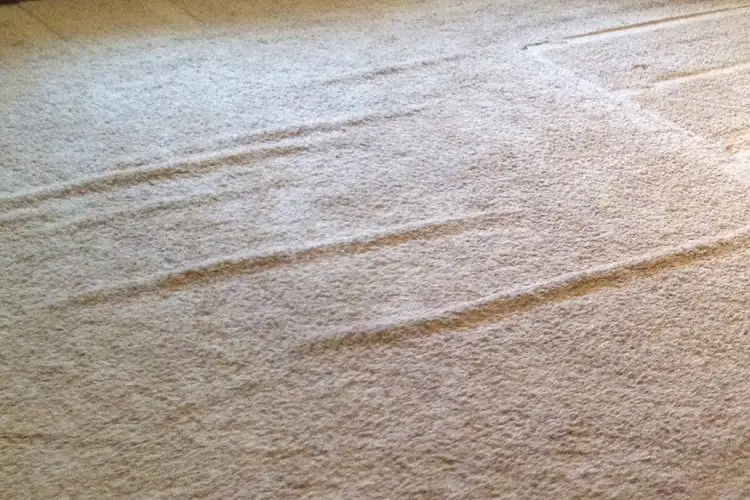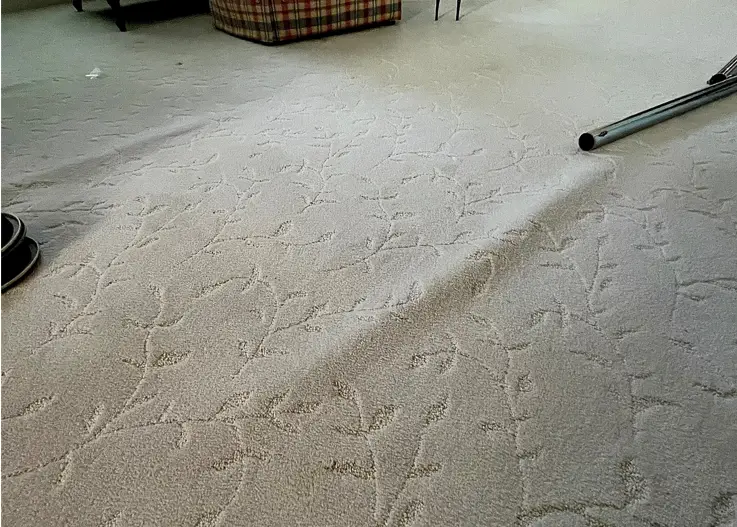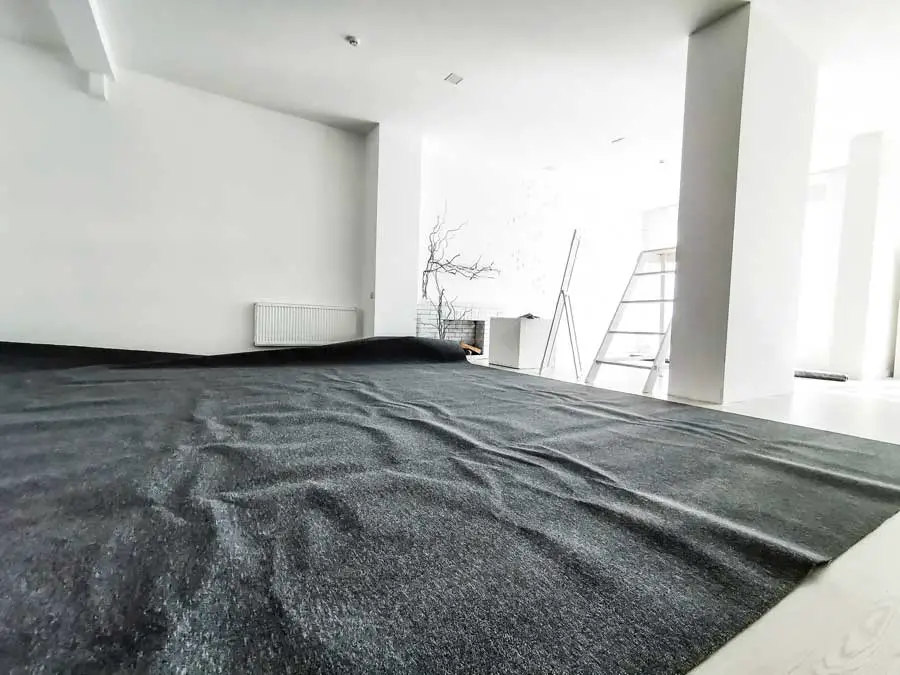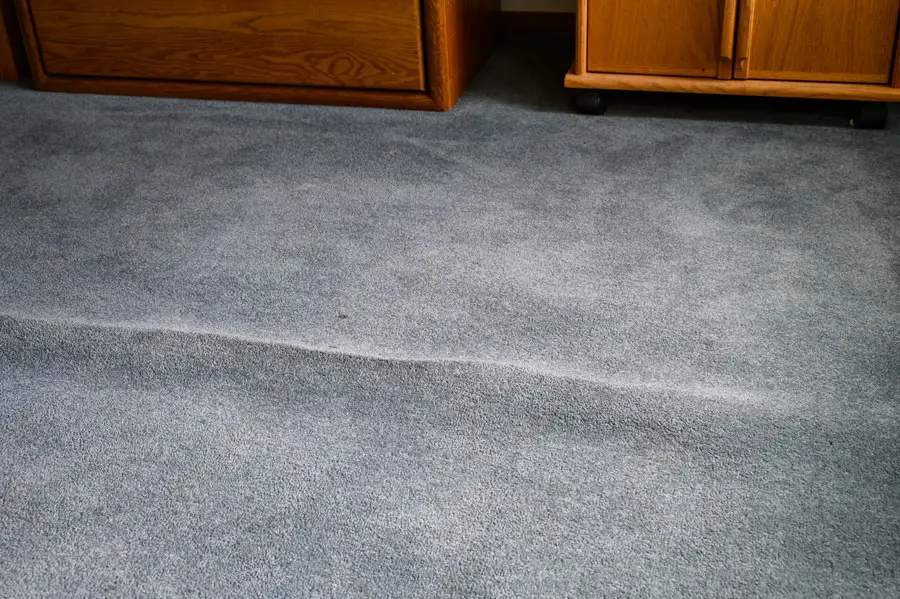Nothing ruins the look of a pristine carpet more than ripples, wrinkles, or buckles rising across the floor. These issues not only detract visually but can also create trip hazards and shorten the carpet’s lifespan. In this guide, we’ll explore everything you need to know about carpet ripples and buckling why they happen, how to fix them (even without professional tools), and how to prevent them from returning.
Carpet ripples, also known as buckling or wrinkling, are raised undulations or waves that appear in wall‑to‑wall carpeting.
They’re commonly caused by tension loss in the carpet backing, allowing the material to bunch together rather than lying flat. These imperfections can happen shortly after installation or many years later, depending on the triggers and conditions.
Common Causes Explained
Poor Installation & Inadequate Stretching

A professionally fitted carpet must be power-stretched across its entire expanse—usually tightened by 1–1.5% in both directions—before anchoring. Skimping on this step allows slack that later forms ripples. DIY installation with knee kickers doesn’t provide sufficient tension, and may lead to early buckling.
Incorrect Padding

Pads that are overly thick, soft, or low-density fail to support the carpet properly. The Carpet & Rug Institute (CRI) recommends residential pads no thicker than 7/16″—anything more can cause excessive flex, eventually loosening the carpet.
Temperature & Humidity Fluctuations
Carpet materials—and the adhesives in the backing—absorb moisture when humidity is high or expand with heat. This causes materials to swell unevenly and pull away from tack strips, leading to visible waves .
Moisture & Over-Wetting
Wet cleaning methods, flooding, or steam cleaning without proper drying can saturate the carpet backing. As it dries unevenly, the carpet may warp or buckle .
Furniture Dragging & Daily Wear

Dragging heavy items across the carpet can stretch and deform the material. Over time, normal foot traffic also causes tension loss and fiber fatigue .
Risks of Ignoring Ripples and Buckling

- Trip Hazard & Safety Issues: Even small buckles can cause falls, especially for children or seniors.
- Accelerated Damage: High points rub against shoes and furniture, causing premature wear or fiber distortion.
- Permanent Creases: Deep folds may never flatten and remain visible even after stretching.
- Structural Indicators: Buckling may signal moisture problems, subfloor instability, or failing adhesives .
Acting early can prevent these risks and keep your carpet looking fresh and safe.
DIY Fixes for Ripples and Buckling
Heat & Weight Method

- Gently steam or apply low heat with a hairdryer—do not press hot tools directly on fibers.
- Stretch the carpet by pulling it toward the wall, tucking the edge beneath baseboards.
- Place heavy furniture over the smoothed area for 24–48 hours to let it set.
- Works best for small buckles, not deep structural issues.
Knee Kicker Technique
Use a knee kicker to push slack carpet toward the tack strip:
- Apply tension gradually across the recalcitrant section
- Firmly press the edges under tack strip using a screwdriver or kicker teeth
- Roll the area with a carpet roller to smooth fibers
This method offers moderate tension without expensive tools.
Board + Rubber Mallet Trick
Flat boards and a rubber mallet can redistribute tension:
- Lay board over the ripple, tap the top lightly
- Roll board to flatten spike-shaped folds
- Tuck edges back securely into the tack strip
Ideal for small folds but takes careful handling to avoid damage .
5. When to Call in the Pros
For significant or stubborn problems, a professional re-stretch may be necessary:
Power Stretching: Pro installers use industrial-grade tools to apply firm and even tension across large areas, ensuring tack strip anchoring.
Edge Repair & Re-Tacking: Loose seams, delamination, or ripped backing are repaired and glued as required.
Environmental Corrections: Professionals may recommend subfloor drying, dehumidification, or moisture barrier installation.
For expert help, check out our guide on Hire a Professional Carpet Cleaner—many services also include re-stretching.
6. Prevention Strategies
Proper Initial Installation
Always request power-stretched carpet installed over appropriate tack strips and CRI-compliant pad.
Maintain Environment Control
Use dehumidifiers and AC to keep indoor humidity between 30–50%. Prevent moisture buildup that leads to buckling .
Avoid Dragging Heavy Items
Lift heavy furniture or use flat boards when relocating. This protects carpet tension even in high-traffic areas.
Mindful Cleaning Practices
Use minimal water and ensure thorough drying after cleaning. Avoid saturating carpet backing. Prefer professional cleaning that includes drying and flattening techniques.
Regular Inspections
Check walls and high-traffic zones semi-annually for ripples and address them quickly before they deepen.
FAQs
Are ripples from humidity likely to go away on their own?
Minor ripples may flatten as humidity drops, but knots or deep folds often remain and require stretching for full resolution .
Can I remove ripples without investing in expensive tools?
Yes—homeowners often successfully use heat-and-weight methods or knee kickers for minor buckles. Large areas may still require professional power stretching.
Is it okay to steam clean carpet without stretching afterward?
Only if edges stayed secure and drying is complete. Steam cleaning can saturate backing and temporarily cause rippling—but proper drying and tucking can mitigate issues .
Does carpet rippling always mean the whole floor needs re-stretching?
Not always. Localized buckles may be fixed with spot stretching. If ripples occur in multiple areas, full re-stretching is often more effective.
Can new carpet buckle quickly?
Yes—if it wasn’t properly stretched during installation, freshly installed carpet can buckle within weeks, especially with temperature or humidity shifts.
Conclusion
Carpet ripples and buckling are not just eyesores they’re signs your flooring’s integrity and safety may be compromised. The good news? Most cases can be fixed quickly with DIY methods like heat, stretching, and rolling.
But for widespread issues or structural concerns, professional power stretching and restoration are the safest and most durable solutions.
By understanding what causes buckling—and using proper installation, environmental control, and maintenance—you can keep your carpet looking smooth, comfortable, and hazard-free for years to come.
For more advanced carpet care advice, exploring issues like water damage or pest infestation, visit these helpful articles:


3 thoughts on “Carpet Ripples and Buckling: Causes, Solutions & Prevention”